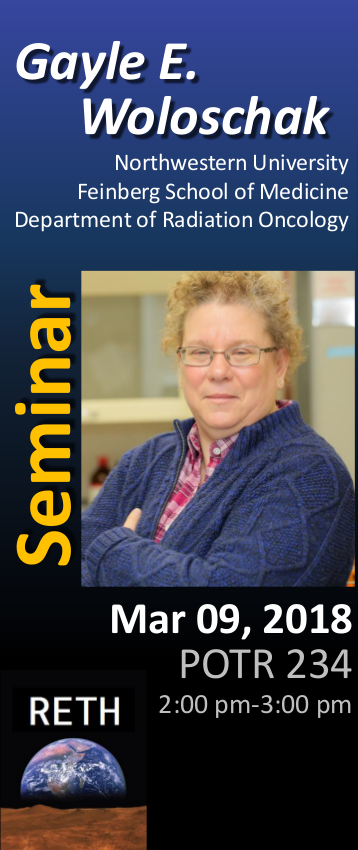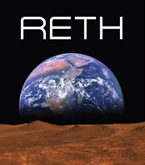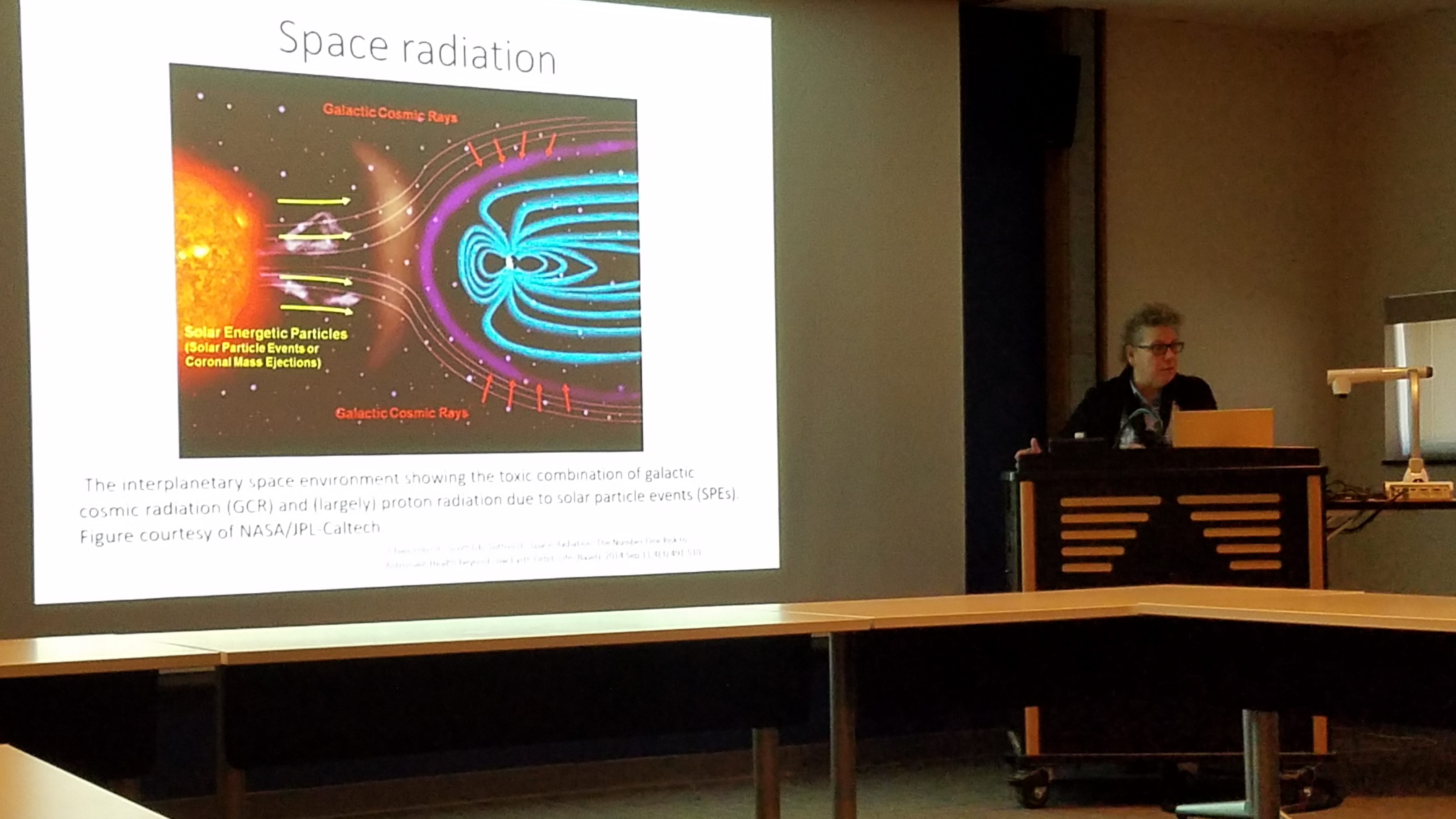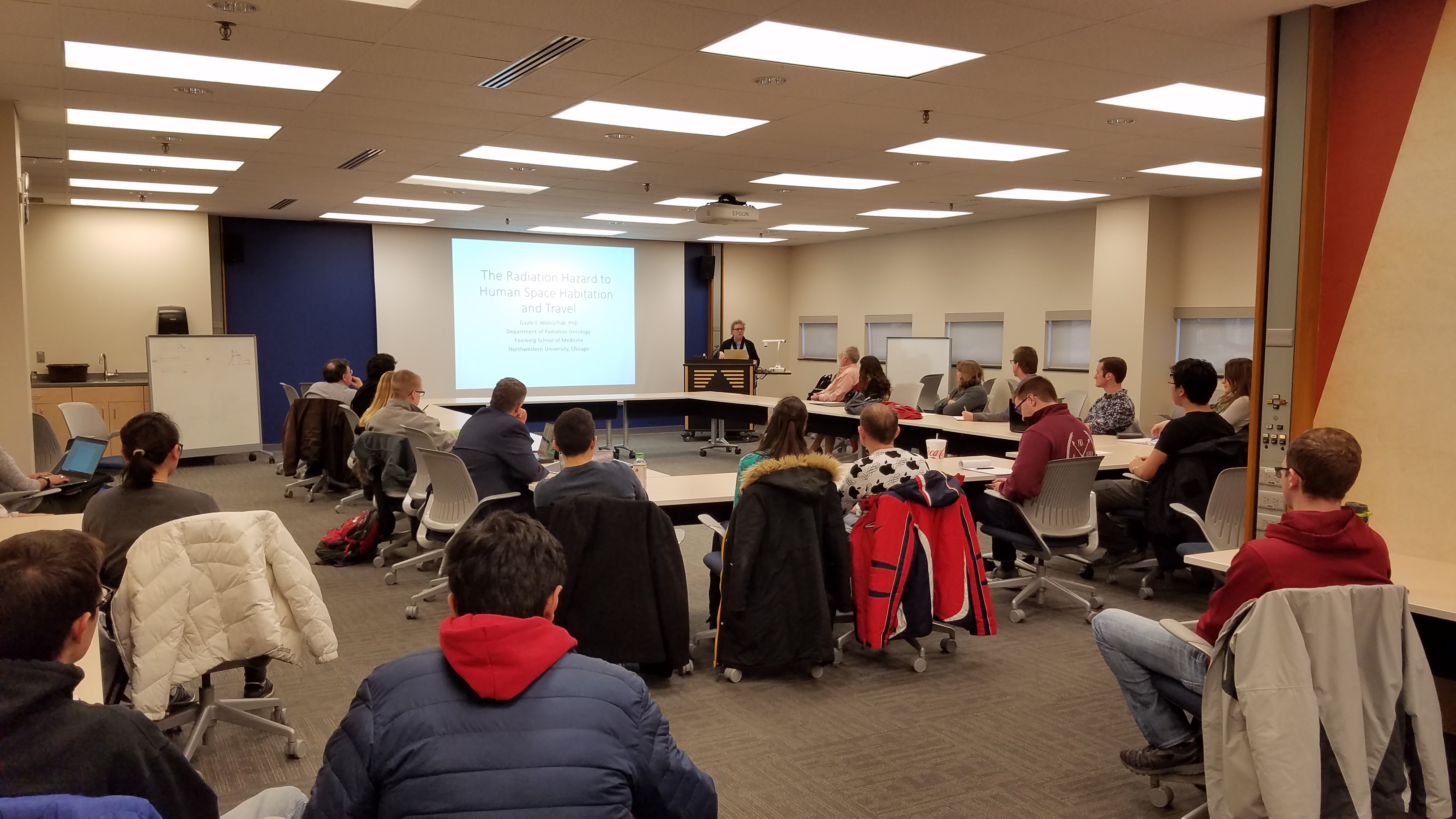Seminar - The Radiation Hazard to Human Space Habitation and Travel

Abstract
The quality of radiation encountered in space is different than radiation on earth, with more damaging and less understood consequences. In the past, much work was done examining neutron effects on cells and animals in an effort to understand the consequences of potential nuclear bomb and radiation incidents. In more recent years, NASA has developed a Space Radiation Laboratory at Brookhaven National Lab to mimic space radiation conditions. The consequences of these radiation effects for acute toxicities, cancer and other potential effects appear to be more significant than standard gamma-ray or X-ray exposure that one encounters on earth. Potential concerns about central nervous system (CNS) and cardiovascular toxicities have also generated much research and discussion.
Speaker Bio
Gayle E. Woloschak, PhD, is Professor of Radiation Oncology, Radiology, and Cell and Molecular Biology in the Feinberg School of Medicine, Northwestern University. Gayle received her B.S. in Biological Sciences, from Youngstown State University and a Ph.D. in Medical Sciences from the University of Toledo (Medical College of Ohio). She did her postdoctoral training at the Mayo Clinic, and then moved to Argonne National Laboratory until 2001.
Her scientific interests are predominantly in the areas of Molecular Biology, Radiation Biology, and Nanotechnology studies, and she has authored over 200 papers. She is editor- in-chief for the International Journal of Radiation Biology, is past-President of the Radiation Research Society, is a member of the Board of the National Council of Radiation Protection and Measurements, is a member of Committee-1 for the International Commission on Radiation Protection and serves on several committees that oversee NASA’s space radiation program. She is a member of the US delegation to the United Nations Scientific Committee on the Effects of Atomic Radiation.



